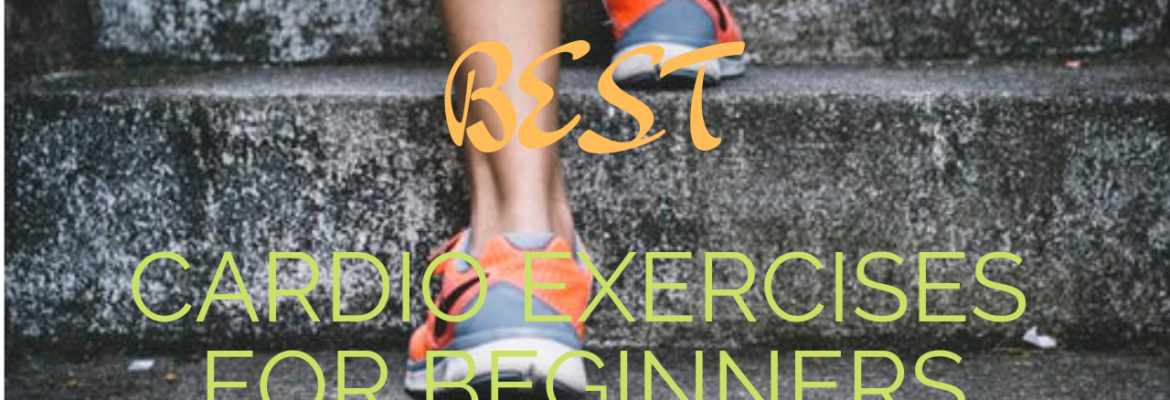What’s The Best Cardio Workout When I’m A Beginner?
The Best Cardio Workout For Beginners

Personal trainers say that one of the main question people often ask when starting out any fitness program is “what is the best cardio workout for beginners”
Now when you mention the word cardio you have to understand that Cardio is vast and cardio alone will have limited benefits and results.
Cardio is best done with a healthy food selection filled with good fats and protein and vegetables and not to mention a weight training program.
So What Is Cardio?
Cardio is really any exercise that raises and elevates your heart rate allowing your heart to pump more blood and oxygen through your veins moving it throughout your system like your muscles and other areas that are requiring it.
One of the biggest muscles often neglected is the heart and it requires to be exercised as well as other muscles in the body.
Like any muscle, the heart adapts and increases in strength and endurance, when you first start out doing cardio it may feel like you can’t breathe and that your insides are on fire.
When I first started doing cardio this was my experience, but the more I did cardio the fitter I got as my heart was adapting and getting stronger.
Also, when I first starting doing cardio, my goal was to drop as much body fat as I could, so I did cardio at least 3 times a week, along with my weight training that I also did three times a week.
To start out with my routine consisted of running and walking for 15 minutes, then I gradually built up my time and endurance, so I would run until I couldn’t run anymore, then walk as I got my breath back so I could run again, as I got fitter I was able to run for further distances.
So, to begin with, I could only run for about 2-4 mins at a time, then eventually I got it up to 60 minutes without stopping.

Different Types Of Cardio Exercises
Some examples of different types of cardio
· Walking briskly (Could burn around 300-400 Calories Per Hour) …
· Running (Could burn Around 600 Calories Per Hour) …
· Cycling (Could burn Around 600 Calories Per Hour) …
· Rowing (Could burn Around 840 Calories Per Hour) …
· Swimming (Could burn Around 600 Calories Per Hour) …
· Jumping Rope (Could burn Over 1000 Calories Per Hour)
How To Calculate Your Maximum Working Heart Rate
When I first started running one of the things that kept me going and motivated was a heart rate monitor with an activity tracking watch that told me my heart rate and calories burnt.
Heart rates are calculated as a percentage, such as maximum heart rate (MHR). Heart rate is measured in beats per minute (bpm).
Maximum heart rate is an estimate of how fast your heart is beating when you are at your maximum effort when exercising.
Your maximum heart rate (MHR) is calculated by the following 2 sums or formulas,
220 minus your age, for example, if you are 40 years of age, your maximum heart rate is 220-40 = 180 beats per minute (BPM).
Or the Karvonen Formula which is 206.9 – 0.67 x age) = Max HR = 180.1
The MHR is the maximum limit of what your cardiovascular system can handle during a physical excursion and it is recommended not to exceed this especially for beginners.
Calculate Your Minimum or Resting Heart Rate With An Activity Watch
The Resting Heart Rate is simply a person’s heart rate at rest and will best be measured in the morning or when you’re relaxed.
An average person resting heart rate could range from 60 to 100 beats per minute.
The resting heart rate usually rises with age and fitness levels, it’s generally lower in people with high fitness levels.
If you have a heart rate monitor follow the following steps, put on the heart rate sensor, Lie down on your back and relax.
- After about 1 minute, start a training session on your heart rate monitor watch chooses any sports profile, for example, Other indoor.
- Lie still and breathe calmly for 3–5 minutes. Don’t look at the monitor.
- Stop the training session on your watch. Check the summary for your average heart rate and the value of your lowest heart rate (this is your resting heart rate). Mark the value of the lowest heart rate in your training diary and update it to your physical setting
- Repeat the test every 1 to 3 weeks following the original setting as closely as possible.
How To Calculate Your Minimum or Resting Heart Rate By Hand.
- Find your pulse with your fingers, not your thumb, while lying in bed before you get up in the morning.
- Count your pulse for 15 seconds and multiply by four, or 30 seconds and multiply by two, for example, 17 beats for 15 seconds 17 x 4 = 68 beats per minute.
- 68 beats per minute is your resting heart rate.
- To get an even more accurate heart rate reading it is recommended that you count the beats for a whole minute.
- Record your heart rate for five days.
Now that you have found your resting heart rate which is 68 beats per minute, and your maximum heart rate is 180.1 beats per minute, you can apply the following formula to find your minimum and maximum heart rates.
As mentioned before there are many formulas that you can use, but I found the Karvonen Formula to be very accurate.
Max HR = 180.1
Resting HR = 68 Max HR – Resting HR
HR Reserve or minimum heart rate = 112.1
So now that you have your minimum heart rate of 112.1 and resting heart rate of 68 and maximum heart rate 180.1, you can work out your targeted heart rate
Target heart rate zones are different levels of intensity that you can sustain throughout the duration of the workout.
You want to stay between 50 percent to 85 percent of your maximum heart rate. This range is your target heart rate.
the different levels are as follows,
Low Intensity: 60% to 70%
This zone is great for beginning and warm up stage or low-level intensity workouts.
Moderate intensity of 70% to 80%
This zone kicks up the body’s intensity, and You’ll burn more calories in this zone,
High intensity 80% to 90%
Working in this zone takes you out of your comfort zone and allows you to burn way more calories
Maximum Effort: 90% to 100%
Working at this level means you’re working as hard as you possibly can, such as all-out sprints at your maximum effort with little rests in between work intervals.
Final Thought
So is cardio important especially when starting out? You will need to decide what fits and works best for you. I have just given you a guide to what I think the best cardio workout for beginners is and looks like, as always get moving and try it out, you have nothing to lose except some stubborn body fat.



